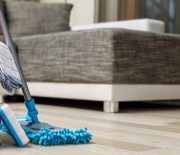Last update: 10 months ago

Honestly, if toys could talk, they’d be screaming for a bath. They’re basically magnets for dirt, drool, and mystery gunk. You’d think a quick rinse would be enough, but spoiler alert! That’s like band-aiding a broken leg! Stay with us as we dive into the wild world of toy hygiene. We’ll give you cleaning hacks on how to clean toys you’ll love.
Why cleaning and disinfecting toys is important
You might think toys are cute and innocent, but they’re out to take over your home! Between being chewed on, dragged across the floor, and traded with friends, toys can pick up everything. From snack crumbs to germs you don’t even want to think about. Flu viruses, Escherichia coli, you name it! And let’s not forget, kids have a talent for sharing everything… except germs, of course! Keeping toys clean isn’t just about avoiding sticky messes. It’s about protecting your child from becoming the next host of a mini germ party.
That’s why regular cleaning and disinfecting is so important. This can make a big difference in protecting your child from germs. These are general guidelines for when your child is healthy. However, toys should be cleaned more frequently during illnesses and again once your child has recovered.
- Hard plastic and bath toys – Clean and sanitise these weekly if they’re used daily.
- Plush toys – Machine-washable ones can be laundered weekly or bi-weekly. Spot-clean, non-washable plush toys as needed.
- Electronic toys – Surface clean these weekly with a sanitising wipe, and always give them extra attention when your child is sick.
- Baby toys – Any toy that ends up in your child’s mouth or on the floor needs extra attention. Clean these every one to two days, while less-used toys can be cleaned weekly.
Different methods for different toys
Toys need different cleaning tricks to stay fresh and in great shape. Don’t worry! We’ve rounded up some easy and effective tips to keep everything safe for your little ones without any fuss.
Washing machine method
Do you know how to clean plush toys? We have great news! Most plush toys can be refreshed with a quick trip through the washing machine! But before you toss them in, be sure to check the care labels. You really don’t want to accidentally ruin “Bunny”, “Dino”, or “Sparkles” the “Unicorn”. Put them in a mesh bag or pillowcase. That way will keep them from rattling around like on a roller coaster.
This method is suitable for:
- Plush toys – Including stuffed animals and fabric dolls. These can be refreshed with a quick wash. Put them in a pillowcase or delicates washing bag.
- Smaller plastic toys – Place them in a mesh bag or pillowcase to prevent damage.
How to clean soft toys safely:
- Prep the toys – Put plush toys inside a pillowcase or delicates’ bag to keep them protected during the wash.
- Select the right settings – Use a gentle cycle, warm water, and a slow spin to prevent damage.
- Dry with care – Keep the toy inside the pillowcase and dry it on a low-heat setting. If your dryer has a rack, you can take the toy out of the pillowcase. Let it air dry without tumbling.
- Fluff it up – For a gentler drying method, use a hair dryer on low heat. Once the toy is just damp, switch to medium heat to fluff up the fur. Let the toys dry completely before use to avoid mould and mildew.
Important: Avoid washing plush toys with battery packs, metal parts, or special attachments, as water can damage them. Before washing, make sure buttons and decorations are securely attached. Repair any small holes beforehand.
For extra convenience, you can also hire professional cleaners for deep cleaning of your home. That way, you can have more time to focus on organising your child’s toys!
Dishwasher method
Using the dishwasher is a handy way to clean and disinfect certain toys with minimal effort. Hot water and dishwasher detergent handle the dirty work. It’s a very convenient option if you have a dishwasher.
Suitable toys:
- Hard plastic toys – These include rubber rings, building blocks, and small animal figures. Remove all batteries or electronic parts. Place them on the dishwasher’s top rack.
- Small plastic toys – Use a mesh bag to prevent them from scattering around during the wash.
How to use the dishwasher for toys:
- Load the rack – Place large toys securely between the tines of the top rack. For smaller pieces, put them in a mesh bag to keep them contained.
- Select the right cycle – Choose the normal or sanitising cycle and use the heated dry option.
- Dry thoroughly – After the cycle, check for any remaining moisture. After the cycle, check for any remaining moisture. Before using the toys, air dry or towel dry them thoroughly.
Handsoap method
A good old-fashioned soap and water cleans toys naturally, safely, and effectively. This classic method works perfectly for many types of toys. It’s easy to do by hand. A toothbrush can come in handy for reaching the tricky cracks and small spaces in dirty plastic toys.
Suitable toys:
- Wooden toys
- Rubber toys
- Plastic toys
- Delicate stuffed toys
How to hand-wash and spot-clean stuffed toys:
- Prepare the cleaning solution – Dip a cloth in a warm, soapy solution and gently go over the entire toy.
- Rinse – Rinse off the soap with a clean cloth.
- Dry – Allow the toy to air dry. Use a low setting on your hair dryer to speed it up. Fluff up the fur.
- Extra-sanitising – To eliminate bacteria, dust mites, and other allergens, use a garment steamer on the toy. Then, vacuum it thoroughly with an upholstery attachment.
Vinegar method
For a natural, no-fuss cleaning solution, vinegar is your go-to hero! It’s not just for cooking. It’s also a fantastic toys’ cleaner. Vinegar works great on hard toys, but not on plush toys. If you’re wondering how to clean bath toys with mould inside, vinegar can be especially useful for tackling mould.
Suitable toys:
- Hard plastic toys
- Rubber toys
- Metal toys
How to use the vinegar method:
- Mix the solution – Combine equal parts white vinegar and water in a spray bottle. Add a few drops of essential oil or dish soap to enhance the cleaning power.
- Apply and soak – Spray the solution directly onto the toys. A damp cloth works too. Soak plastic toys in vinegar water for about an hour to get rid of stubborn stains.
- Wipe and dry – After cleaning, wipe the toys with a clean cloth to remove any excess vinegar. The acidity left over from vinegar is bad for kids.
Bleach method
When it comes to deep cleaning toys, bleach is a powerful disinfectant. However, it can be harmful if used incorrectly. So, use it with extreme care.
Suitable toys:
- Hard plastic toys
- Non-porous rubber toys
- Metal toys
How to use the bleach method:
- Prepare the solution – For a dishwasher or washing machine, add half a cup of bleach to the load. For soaking in the sink, mix half a cup of bleach per gallon of water.
- Soak or wash – Soak the toys in the bleach solution for about five minutes in a sink. Run a standard cycle in the dishwasher or washing machine.
- Rinse thoroughly – After soaking or washing, rinse the toys thoroughly with clean water to remove any bleach residue.
- Dry – Allow the toys to air dry completely before use.
Safety tips:
- Handling – Always handle bleach with care. Use appropriate personal protective equipment and keep the Safety Data Sheet (SDS) accessible for emergency reference.
- Dedicated cleaning bin – Some parents find it useful to have a separate plastic bin for toys that need disinfecting. Once a toy is soiled, it can be placed in the bin with a bleach solution for easy cleaning.
- Storage – Store bleach in a well-ventilated, cool area, out of direct sunlight. Ensure it’s labelled and kept away from children. The garage is perfect for that purpose. Do a garage declutter session if you need to open up space for cleaning supplies.
Do you need a helping hand?
Hire a professional cleaning team!
Boiling method
Boiling hard and plastic toys is a reliable and effective way to get rid of germs. High temperatures sanitise toys without harsh chemicals.
Suitable toys:
- Hard plastic toys – Perfect for building blocks and bath toys that can withstand high temperatures.
- Non-electronic rubber toys – Water-safe and free of electronic components ones.
How to use the boiling method:
- Prepare the pot – Fill a large pot with water and add a few drops of dish soap.
- Boil the water – Place the pot on the stove. Bring the water to a rolling boil. Boil for about 10 minutes.
- Sanitise the toys – Carefully add the toys to the boiling water. Ensure they are fully submerged. Let them boil for the full 10 minutes to effectively kill the germs.
- Cool and dry – After boiling, remove the toys with tongs or a slotted spoon. Let them cool on a clean towel or drying rack. Ensure they are completely dry before returning them to your child.
Steam cleaner method
Steam cleaning is a simple yet powerful option for kid-friendly cleaning. It uses just water and heat, making it safe and eco-friendly. The high-temperature steam kills most germs, bacteria, and dust mites, making it perfect for keeping your child’s space both clean and safe.
Suitable items:
- Plush toys
- Mattresses
- Strollers
How to use a steam cleaner:
- Prepare the steam cleaner – Fill the steam cleaner with water according to the manufacturer’s instructions. Let it heat up.
- Steam clean – Use the suitable attachment to steam clean the item. Start from the top and work your way down. For plush toys, gently move the steam cleaner over the surface to avoid over-saturating.
- Allow to dry – Let the cleaned items air dry completely. Steam cleaning can leave items damp, so ensure they are thoroughly dried before use.
Cleaning wipes for immediate cleaning
When your child’s toy hits the park floor, cleaning wipes can help disinfect it quickly. They’re great for immediate cleaning. Keep them out of your kid’s mouth, though. Once you’re home, it’s important to fully sanitise the toy.
Suitable items:
- Cribs and kids toys with hard surfaces
- Electronic toys
Methods for toys that cannot be washed
Some toys can’t handle a dip in water, but that doesn’t mean they get a free pass on cleaning. Just avoid exposing them to moisture. As you know, water and batteries just don’t mix—unless you want a toy that’s forever stuck on mute.
For battery-operated toys, hand washing is the way to go. Before you even think about cleaning, check the fabric and trims. If they can’t handle water (like those fancy dresses on dolls or the plush exterior of your kid’s favourite singing teddy bear), avoid the washing machine entirely. Spot cleaning is your best bet here. Use a damp cloth with a bit of mild soap. Don’t soak it! Gently wipe down the surface. If needed, give it a little scrub with a soft brush for stubborn spots.
Electronic toys are a bit like your remote control: they can only take surface cleaning. Before you start, remove the batteries and close the compartment securely. With a damp (not soaking) cloth, wipe down the toy. Pay attention to sticky buttons or crevices. Don’t let any liquid get into the toy’s electrical parts. Allow the toy to air dry completely after cleaning.
If you want to sanitise the toy, use disinfecting wipes or a mild bleach solution (four teaspoons of bleach to a quart of water). Let the disinfectant work on the toy for a few minutes. For toys that might end up in your child’s mouth, always rinse them well with a clean cloth afterwards.
Some other helpful tips
How to do first-time cleaning/disinfecting
Take your time when cleaning toys for the first time. Making sure it’s done right is key. Start by checking the manufacturer’s cleaning instructions or care labels. You won’t damage any electronics or delicate materials that way. When wondering how to clean baby toys before first use, such as hard plastic and rubber toys, a good wash with warm water and soap is usually enough to remove dirt and grime. For plush toys, double-check whether they can handle a spin in the washing machine. Always use a gentle cycle.
Use non-toxic cleaning products for first-time disinfection. Simple solutions like white vinegar and water won’t expose children to harsh chemicals. You can also use wipes or a gentle bleach solution (only if recommended for the toy type) to disinfect surfaces, making sure to rinse well afterwards. Whether you’re using soap, vinegar, or bleach, always air dry toys completely to avoid mould or mildew buildup. Once you’ve established this first routine, regular cleaning will be a breeze!
How to clean secondhand toys
Use a weak bleach solution to sanitise secondhand toys that make their way home from garage sales, resale shops, or generous relatives and neighbours. Be sure to rinse well and dry thoroughly.
How to clean outdoor toys
Have any outdoor toys? Little gyms, sandboxes, or play houses and such? Birds, bugs, pets, and visiting animals make E. coli a concern and make it necessary to sanitise these on a regular basis. Use a spray sanitiser or sanitising wipes, or just give it the ol’ “driveway carwash” treatment with hot, soapy water and a nice garden hose rinse-off.
Sanitising and disinfecting
Let’s clarify the difference between sanitising and disinfecting. First, they’re not the same thing! People often mix them up, but they’re actually different jobs. Sanitising means reducing the number of germs on a surface to a safer level. Disinfecting is all about going the extra mile and wiping out almost every germ, bacteria, and virus hanging around.
Sanitising is suitable for everyday cleaning. It is very suitable for toys made from soft materials like plush toys or fabric dolls. It sanitises them by removing most germs, making it safe for regular use.
Disinfecting is best for hard, non-porous toys like plastic, rubber, or metal. They just can handle stronger cleaning agents. This method is particularly useful after playdates, when toys have been shared, or when someone in the household is ill.
When to use each method
- Plush toys/fabric toys – Sanitising is enough for day-to-day cleaning. Toss them in the washer, and you’re good to go. Disinfecting can be saved for those times when the toy’s been exposed to illness or just needs an extra-deep clean.
- Hard plastic or rubber toys – These should be disinfected regularly, particularly if they’re often handled or end up in a child’s mouth.
- Electronic toys – Since you can’t soak them, use sanitising wipes or sprays. Disinfect as needed, especially during those cold and flu seasons when germs seem to be everywhere.
Special considerations during illness
If your little one is battling a cold or flu, disinfecting should be part of the daily routine. Any toy that’s been touched or mouthed (which is basically every toy) should get a disinfecting wipe-down. Once they’re back to their happy, healthy self, do a final round of disinfecting on all the toys and surfaces to make sure no germs are left hanging around for a comeback!
Takeaways
- Regular cleaning is a must – Clean hard plastic and bath toys weekly, while sanitise and disinfect plush and electronic toys depending on their use.
- Different methods for different toys – Not all toys can handle the same cleaning routine. Plush toys? Throw them in the washing machine. Hard plastic ones? Pop them in the dishwasher. But electronic toys? Better stick to surface cleaning with wipes. Whether it’s handwashing, vinegar, or even bleach, each toy needs its own magic touch.
- Sanitising vs. Disinfecting – Sanitising cuts down the germs to a safer level, which is great for everyday cleaning. But disinfecting? That’s your heavy-hitter. It kills most of the germs and is key after an illness or when toys have been passed around like hot potatoes. Both methods have their place, so use them wisely!
Do you need a helping hand?
Hire a professional cleaning team!








